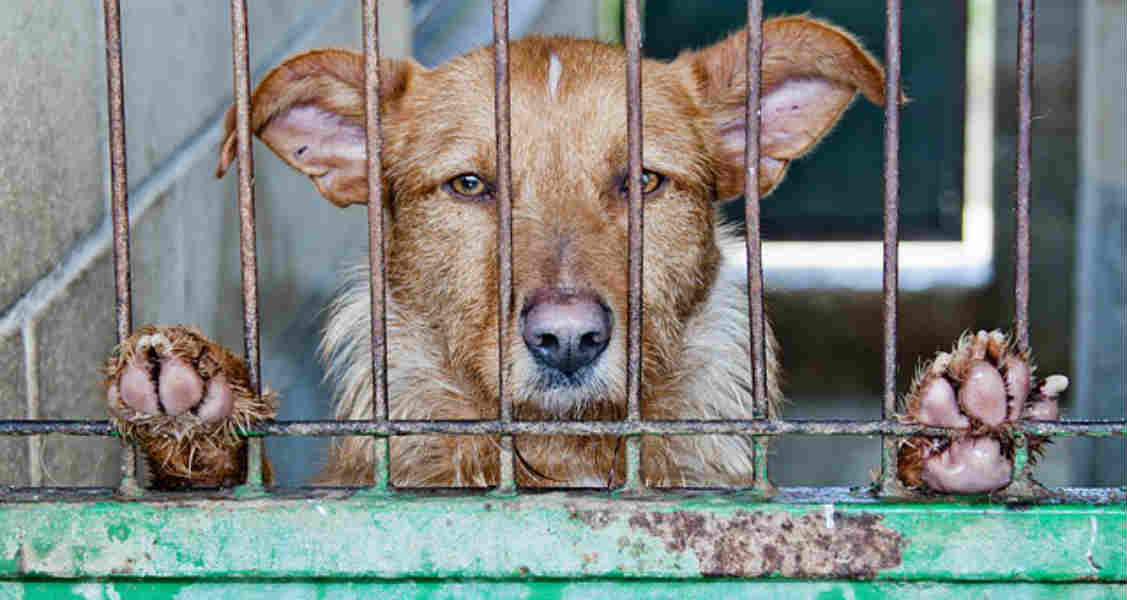Signs and Types of Animal Abuse and How to Stop It
By: Sara Burnside Menuck | Reviewed by Dr. Clayton Greenway, B.Sc., DVM | Apr 17, 2019

If you’re on this site, you’re likely already an animal lover who doesn’t need to be told why treating animals with respect, love and care is important.
And yet, abuse persists: Humane Canada found that in 2015, nearly 140,000 animals were taken in by shelters – while many shelter animals are strays, a large number are surrendered either by authorities or ordinary people who find them in abusive or neglectful situations.
Cruelty against animals comes in many forms. Animal cruelty can be intentional, but often it is a result of lack of education or financial means. Here’s an overview of how to recognize cases of animal cruelty, and what to do next.
Types of animal abuse
Often when people think of cruelty to animals, they think of active abuse, but in reality, neglect is as common a form of cruelty and just as damaging: Neglecting to provide proper care can result in the animal developing severe and often chronic health problems.
Aside from physical violence, other forms of animal cruelty include:
- Overcrowding or hoarding (multiple animals not being given adequate space)
- Environmental abuse (being forced to live in an unsanitary or unsafe environment, including being denied adequate shelter)
- Denial of basic care, including the provision of food, water and medical attention
Signs of animal abuse
There are many visual clues that can suggest cases of animal abuse. Obvious signs of neglect include emaciation, dirty/matted fur or overgrown nails, open/festering wounds, or untreated skin conditions (rashes, bumps, scaly skin, etc.). Other physical warning signs can include heavy discharge from the eyes or nose, flea or tick infestations in the fur, a collar so tight that it is causing a wound, or physical weakness.
Environmental signs of abuse can include the animal being chained or kept outside without food or shelter, either at all times, for long periods or during inclement weather. Another warning sign is if the animal’s living area is unconscionably dirty, littered with feces/harmful objects such as broken glass or garbage.
While an animal’s behavior can be a sign of abuse, it is a less reliable indicator than physical cues. There are many factors that go into an animal’s behavior, including aggression or timidity. However, consistent displays of aggression or peculiar behavior toward a specific person can be a sign that the animal has a particularly negative experience with that person.
What to do next?
If you suspect an animal is being abused or neglected, it’s important to take action – but act wisely. Never confront a suspected animal abuser in person. Instead, get in touch with your local animal control officer or humane society. These authorities will protect your identity while conducting on-site assessments of a property and can take the appropriate action if they find evidence of animal cruelty. If you see an animal in immediate threat of violence or danger, call the police.
How you can help
There are a number of ways to support organizations dedicated to the prevention of animal cruelty. Consider donating to a local humane society, animal shelter or animal sanctuary: Often, these are nonprofit organizations that rely on donations and volunteers, and the animals they take in are frequently in dire need of care. Even the smallest donation can help provide these animals with food, shelter and veterinary care.
Beyond financial support, you can also donate your time: Animal shelters are often in need of volunteers for a wide range of activities, from administrative duties to dog walking. Get in touch with a local organization to see what opportunities are available.
If you’re willing to make a major commitment, becoming a foster parent can be incredibly rewarding and is a crucial part of many humane societies’ work. Foster parents provide temporary home care for animals aren’t ready to be permanently adopted. Foster homes may also take in animals with chronic or terminal conditions that require a quiet, comfortable home for the remainder of their lives. Applying to become a foster parent can be a lengthy process, often requiring specific training, but is a hugely rewarding way to get involved in an animal’s rehabilitation.
Learn more
There are many ways to learn more about any of the topics above:
- Visit ca’s directory of humane societies across Canada to get in touch with your local chapter [http://www.petfriendly.ca/links/humane.php]
- The Canadian Federation of Humane Societies has a wealth of information about different animal-cruelty issues in Canada, including a thorough introduction to the country’s animal-cruelty laws [http://cfhs.ca]
- The Ontario SPCA website has a useful checklist for signs of animal cruelty, as well as other tips for recognizing cases of abuse [http://ontariospca.ca/what-we-do/investigations/what-is-animal-cruelty.html]
Animal Shelter Statistics, 2015. Canadian Federation of Humane Societies. Dec. 14, 2016. cfhs.ca/athome/shelter_animal_statistics
“Recognizing Animal Abuse.” Canadian Veterinary Medical Association. 2017. www.canadianveterinarians.net/policy-advocacy/recognizing-abuse
“Report Animal Cruelty.” Ontario SPCA. 2017. ontariospca.ca/what-we-do/investigations/report-animal-cruelty.html


Disclaimer: healthcareforpets.com and its team of veterinarians and clinicians do not endorse any products, services, or recommended advice. All advice presented by our veterinarians, clinicians, tools, resources, etc is not meant to replace a regular physical exam and consultation with your primary veterinarian or other clinicians. We always encourage you to seek medical advice from your regular veterinarian.

